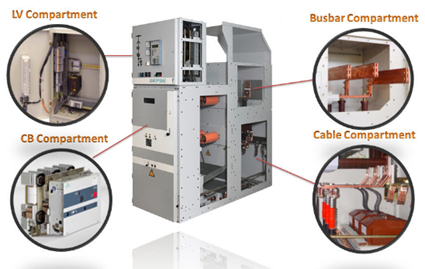Abstract: This article will introduce the difference between linear vs. switching power supply in definition, pros and cons, application, Noise and Size, Conversion Loss, Load Fluctuations, and Output Power.
Linear vs. switching power supply – Difference in Definition
Linear and switching power supplies are two distinct types of power sources with significant differences in design and operational principles.


Linear Power Supply
The working principle of a linear power supply involves adjusting the input voltage using a linear regulator to obtain a stable output voltage.
This type of power supply is typically simpler and does not require complex control circuits.
It is suitable for applications that require high power stability, such as precision instruments or audio equipment.
Switching power supplies use high-frequency switching devices, such as MOSFETs, to convert the input voltage into a pulse signal, which is then filtered to achieve the desired output voltage.
This design feature gives switching power supplies an advantage in terms of efficiency and compact size.
Switching power supplies are commonly used in applications that demand high power density and efficiency, such as computer power supplies and electronic devices.
Linear vs Switching Power Supply – Difference in Pros and Cons
Pros and Cons of Linear Power Supply
Pros: Stable output voltage, minimal electromagnetic interference, suitable for noise-sensitive applications.
Cons: Low efficiency, larger size, generates more heat, suitable for low-power applications.
Pros and Cons of Switching Power Supply
Pros: High efficiency, compact size, lower heat generation, suitable for high-power density applications.
Cons: Potential for more electromagnetic interference, larger output voltage fluctuations, not suitable for noise-sensitive applications.
Linear vs. Switching Power Supply – Difference in Application
Typical Applications of Linear Power Supply
- Laboratory instruments and measurement equipment
- Audio equipment and amplifiers
- Telecommunication devices
Typical Applications of Switching Power Supply
- Computer and server power supplies
- Mobile phone chargers
- Industrial automation equipment
Linear vs. Switching Power Supply – Difference in Noise and Size
Linear power supplies typically produce less electromagnetic interference and noise because their operational principles do not involve high-frequency switching. However, they have a relatively larger size due to the need for substantial heat dissipation.
Switching power supplies are generally compact in size because they can operate at high frequencies, reducing the size of required electronic components. However, they may produce electromagnetic interference and high-frequency noise, requiring additional filtering to mitigate these issues.
Linear vs. Switching Power Supply – Difference in Conversion Loss
Linear power supplies exhibit relatively higher conversion losses as they regulate voltage by dissipating excess voltage as heat.
Switching power supplies typically have lower conversion losses because they employ efficient switching devices to perform voltage conversion, reducing energy wastage.
Linear vs. Switching Power Supply – Difference in Load Fluctuations
Linear power supplies are less sensitive to load fluctuations and can rapidly respond to changes, maintaining a stable output voltage.
Switching power supplies may perform less effectively when faced with load fluctuations, as they require some time to adjust and maintain output stability, especially in rapidly changing load conditions.
Linear vs. Switching Power Supply – Difference in Output Power
Linear power supplies are typically suitable for low-power applications due to their lower efficiency, making them less suitable for high-power requirements.
Switching power supplies are suitable for high-power density applications because they can provide higher efficiency while maintaining a smaller size and weight.






